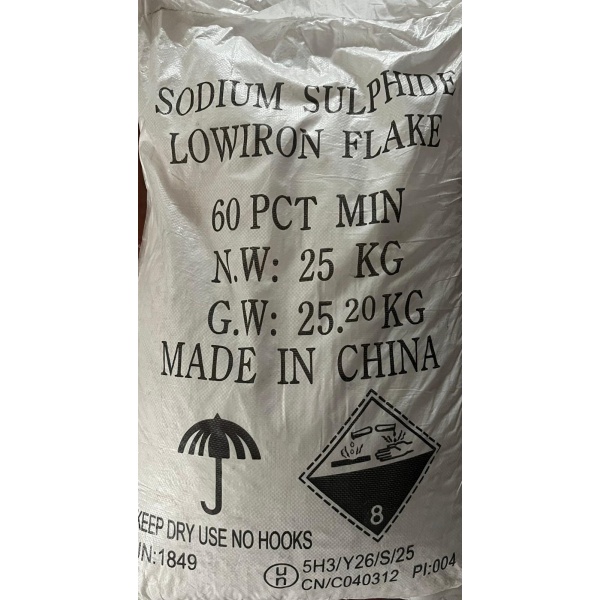SODIUM SULPHUR ITALY
0.80 $
CAS number: 1313-82-2, 1313-84-4 (pentahydrate) 1313-84-4 (nonahydrate)
PubChem: 237873
EC Number: 215-211-5
UN number: 1385 (anhydrous) 1849 (hydrate)
RTECS number: WE1905000
Molecular formula: Na2S
Molar mass: 78,0452 g / mol (anhydrous) 240,18 g / mol (nonahydrate)
Appearance: colorless, hygroscopic solid
Odor: Rotten Egg
Density: 1.856 g / cm3 (anhydrous) 1.58 g / cm3 (pentahydrate) 1.43 g / cm3 (nonohydrate)
Melting point: 1176 ° C (anhydrous) 100 ° C (pentahydrate) 50 ° C (nonahydrate)
Solubility in water: 12.4 g / 100 mL (0 ° C) 18.6 g / 100 ml (20 ° C) 39 g / 100 ml (50 ° C)
Solubility: insoluble in ether, slightly soluble in alcohol
General Information
Its chemical formula is Na2S which is a water-soluble, yellow-colored, smelly, strong-reducing chemical that easily dissolves in water. When it is heated with sulfur, it gives the polysulfides used in the preparation of artificial sulfur baths. The color of impurities can be industrial sodium sulfide khaki, pink, brown. Weight, melting point, boiling point, also varies due to foreign matter.
Production and Reactions
They can be obtained by the coal reduction method.
Na2SO4 2 C? Na2S 2 CO2
With the suction method 380 ~ 420 g / L sodium hydroxide solution, 85% hydrogen sulfide gas is absorbed and evaporated with sodium sulfide can be obtained.
H2S 2 NaOH? Na2S 2 H2O
Sodium sulfate and barium sulphate by barium sulfate method can be obtained by precipitating sodium sulphate as a byproduct as well as barium sulfate by using metathesis reaction.
BaS Na2SO4? Na2S BaSO4
When sodium sulphide and hydrochloric acid are mixed in one-to-one ratio, hydrogen sulfide gas can be obtained.
If you add hydrochloric acid to sodium or potassium cyanide, hydrogen cyanide can be obtained.
Usage areas
Metal
It is used as sulfating reagent in the preparation of metallic copper, oxidized copper, lead and zinc minerals for flotation and also used as a suppressor in selective flotation of semi-metal ores.
Skin
It is used in the leather industry for bristle casting.
Ceramic
It is used as a quencher for quartz in the ceramics industry.


